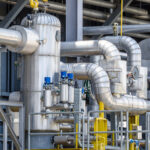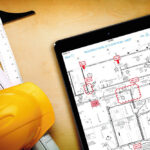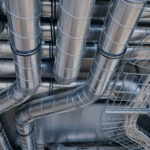HVAC Piping is one of the most important structures of a building. It holds some of the key features that ensure a construction project’s successful outcome. A building cannot function without it. They are a necessity for proper heating, ventilation, and air conditioning of the property. During any harsh climate, these systems provide a sense of comfort. It controls humidity and meets the heating and cooling needs. Man cannot survive without them. These systems make sure that we don’t turn into a sweaty puddle or freeze up! Other than that it also maintains a healthy indoor environment by keeping us safe from pollutants. Air quality cannot be compromised as it impacts health and well being. The importance of HVAC systems is widely understood. They are for sure a worthy investment. The main components of HVAC include:
-
Air Conditioner
-
Duct System
-
Air Filter
-
Blower
-
Condenser
-
Thermostat
-
Evaporator Coil
-
Expansion Valve
-
Heat Pumps
-
Furnaces
HVAC installation can be expensive so HVAC Estimating can help manage your budget. They will analyze the type and quantity of material that will be used. And then use this to calculate the cost. It gives an estimate of how much cash flow is needed to install as well as maintain these systems. A skilled estimator will provide you with an accurate assessment and analysis.
A well-designed HVAC system can help conserve unnecessary usage of energy. It also saves costs. HVAC systems need to be properly installed for durability and correct performance. The best way to do this is by HVAC Piping. Piping Estimating Services are also offered by most construction services. Now the installation of HVAC Piping can be a tricky task. It is composed of many components. Even a skilled professional has to be alert to make sure that he is making no errors. Small mistakes in judgment can be costly. Don’t worry, here are 6 common mistakes that occur while installing HVAC pipes that can be avoided. Read this article to make sure that you don’t make them!
Low-Quality Material
Selecting the right type of material is very important. They need to have strength and be resistant. These pipes are going to carry hot and cold water, steam, gas, to other components. If they are not durable, then they will collapse. They will not be feasible in the long run and will require maintenance over and over. So it is good to suggest the client invest in sturdier material to avoid any mishaps. Systems made with low-quality material cannot function ideally. They will compromise air quality within the building. The system might also fail to deliver any sort of temperature control. So going for the cheapest material in the market will do more bad than good. They are often with low-quality components. New problems will keep on popping up. These pipes will wear and tear down early.
Selecting the Wrong Size
Choosing the wrong size of pipes is problematic. One should note down the measurements and dimensions of the unit correctly. The equipment needs to be of the same size so do take time out to double-check this! There shouldn’t be any mistake in that. Bigger does not always mean better. It would be problematic down the road. It should fit perfectly to ensure the client is getting the best output. A smaller size means it will struggle to meet up with the required needs of the building. A larger size will mean it’ll consume more energy and cost than it should. If the system is smaller or bigger, it will ultimately end up pressurizing the system.
Reduced Airflow
Another mistake during installation is not giving the system enough airflow. Reduced airflow can damage the system and decrease efficiency considerably. For cooling efficiency, the areas around the HVAC system should be clear. For ventilation, it should be installed high up so that nothing blocks the circulation of air. Similarly, heat registers should also have maximum airflow so that they operate at their best.
Improper Ductwork
Improper ductwork can lead to hot and cold spots in the house. The thermostat for maintaining the temperature will fail. There will be little or no airflow from the supply vent. It can cause numerous problems. Wrong fitting of ducts will result in increased utility expenses. To ensure that this does not happen, ductwork needs to be spot on. There shouldn’t be too many ducts coming off the plenum, as it causes poor airflow. Duct runs should be kept short. As we have mentioned before, the size of the equipment should be accurate. It shouldn’t be under or overfitting. Proper insulation is also necessary.
Improper Sealing of System
Let me tell you that leakage is considered to be a nightmare in piping. As most of the piping is underground, if leakage occurs, the remedial cost will be too much. It can not only damage the construction foundations but also a health hazard. Therefore, the system must be properly sealed to avoid any seepages.
Installation at the Wrong Location
This is considered to be one of the most important aspects of an HVAC system. While installing a new system one must choose the right location. For example, while installing a heating system, surroundings must be considered. If the emplacement of the heating system is colder than usual it may end up using more energy than required which will affect the utility expenditure. If there are other buildings around HVAC, air pollutants from those structures might destroy your system. The same goose for the outdoor unit of the HVAC system. Location is vital for performance. Wrong placement can cause safety concerns as well as ineffectiveness.
Conclusion
Concisely, the importance of HVAC Piping cannot be overlooked. Installation of this system must be precise and 100 percent. Even the slightest of mistakes can create a major problem and for its rectification, additional costs will be incurred. The above discussed are the most common mistakes that must be avoided in any construction plan.




